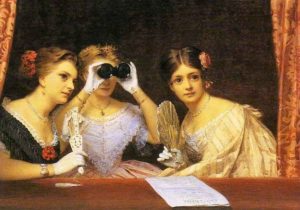When reading a book, we are the onlookers—we have control of our eyes running over the words on the pages. What’s startling is when we feel like we are being looked back at. I’m not a big fan of portrait paintings for this reason. It is much more enjoyable for me to be the onlooker hidden from view of the subject, instead of being the subject myself. As we look onto Percival Everett’s character Vlepo in his novel Frenzy, we soon realize that we are an onlooker to an onlooker, the difference here though is that Vlepo doesn’t really seem to have the choice that we do as Dionysus controls his every move.
Let’s start by looking at what the unique name of this character means.
The English translation of “Vlepo” is “I see” and based on his role in the novel, this is a fitting name for his character. Vlepo sees into the minds of the other characters as he is letting us into his mind through the first person perspective of his character.
Although it was not necessarily his choice to delve into the minds of other people, it still felt like (at least to me) that it was an invasion of their privacy. On the contrary, however invasive it may have been, swimming in the thoughts of the other characters made for a better explanation of them individually and what was going in the novel in general. Good background makes for a more clear explanation.
Now coming back to portraits—
As I’m sure you’re all aware, portraits have eyes because people have eyes, but what are those eyes looking at? Are they looking at the person painting them? Are they looking at the person looking at them? Do they even know they are being watched or painted? For some it is easy to tell, like those old painted portraits of royalty where they are clearly posing, but others aren’t so clear.
This painting has three women in it and it looks like they are at the theatre or a show of some kind. However, what we don’t know is if they are posing or in a natural state which effects the fact of whether they know if they are being watched or not. If they are being watched, then it is similar to Vlepo’s state of invasion because from context it seems as though the people he is looking in to are unaware of it. This is an instance where background would make for a more clear interpretation.
To reverse the situation, we can use The Mona Lisa as an example. There are many conspiracies surrounding the painting but what most people say is that her eyes follow you around the room, like she’s always watching. Most people would agree that being watched is uncomfortable and I know that if I was aware of Vlepo reading my thoughts, or someone was looking at me from a distance to paint me, I would not appreciate it. It can also be uncomfortable just knowing that the invasion is happening, for example knowing that Vlepo knows the other character’s thoughts. But this may have been Everett’s goal—to evoke some sort of emotion to have readers thinking and questioning the morality of the situation, as well as feel sympathy for Vlepo as it was happening against his will. Looking and seeing, although seemingly harmless, can fill you with power and knowledge.

